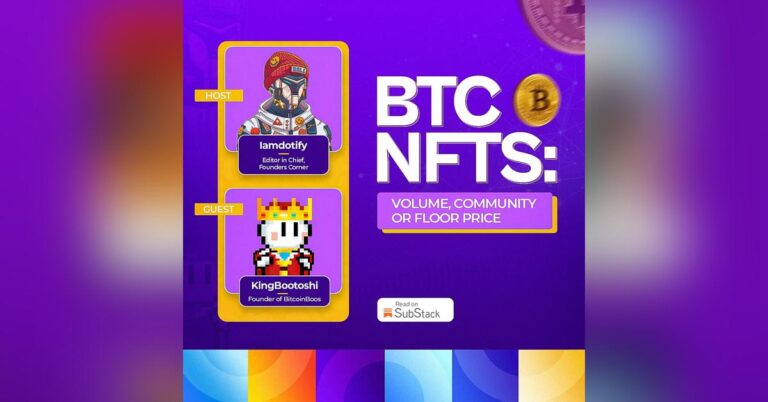An Overview of Nubit
At Nubit, we are building a trustless world computer for Bitcoin. While Bitcoin is hitting all-time highs during this bull market, its potential as a currency and as a network reveals a paradox. On one hand, Bitcoin dominates over 60% of the market share with a daily volume exceeding $20 billion. On the other hand, the Bitcoin network is limited to just four transactions per second. To put that into perspective, centralized systems like Visa can handle thousands of transactions per second—around 4,000, to be precise.
This fundamental limitation of Bitcoin has stifled many promising ecosystem projects, such as Bitcoin Layer 2s, oracles, and DeFi protocols. These projects often fail to gain traction because Bitcoin’s scalability issues lead to network congestion and rising fees. While numerous solutions, like Layer 2s, aim to address these challenges, they still rely heavily on centralized components. Getting transactions settled on Bitcoin remains not only expensive but also technically complex.
Enter BitVM, a concept originally proposed by Robin Linus, a Ph.D. student at Stanford and the founder of ZeroSync. BitVM introduces a powerful idea: moving heavy computational tasks off-chain while using Bitcoin for validation. This approach leverages cryptographic proofs to ensure trustlessness, eliminating the need for third-party reliance.
The potential of BitVM is transformative. It enables shared Bitcoin security, supports native staking protocols with complex slashing mechanisms, and allows for programmable Bitcoin-native assets—far more advanced than the static figures currently sitting on the Bitcoin mainnet. With these assets, we can introduce Bitcoin-native tokens and build more sophisticated DeFi applications, such as decentralized exchanges (DEXs).
However, the journey from the BitVM prototype to a functional product is incredibly challenging. To create a production-ready BitVM, developers must first implement verifiers in high-level programming languages like Rust. While this part is relatively straightforward, the real challenge arises during compilation, as Bitcoin’s scripting language is significantly limited compared to platforms like Ethereum or Solana. Bitcoin’s script is akin to a one-year-old with limited expressions—it can only “cry” or “not cry.” Translating even simple programs into Bitcoin scripts can result in massive data sizes, making on-chain deployment prohibitively expensive.
To overcome these hurdles, Nubit has introduced a comprehensive solution:
First is the Nubit BitVM – our production-ready implementation of BitVM, serving as the execution layer. Secondly, Nubit DA (Data Availability Layer) which is a decentralized storage solution tailored for Bitcoin. Thirdly, the Goldinals Protocol, a programmable Bitcoin-native asset protocol designed as the backbone for upstream applications.
Our vision is to unify the Bitcoin ecosystem while staying true to its trustless foundation. Goldinals eliminates the reliance on centralized indexers, which have historically been a bottleneck for protocols like Ordinals. With Goldinals, developers can create Bitcoin-backed assets in a fully decentralized manner.
Overall, Nubit combines scalability, programmability, and decentralization to transform Bitcoin into a true trustless world computer. With our recently released whitepaper on Goldinals, we’ve set the foundation for an ecosystem that empowers developers to build innovative applications directly on Bitcoin.
NUBIT POSITIONS ITSELF AS THE ‘TRUSTLESS WORLD COMPUTER FOR BITCOIN.’ HOW DO YOU SEE THIS VISION COMPETING OR COMPLEMENTING PLATFORMS LIKE ETHEREUM THAT PIONEERED THE WORLD COMPUTER CONCEPT? WHAT’S YOUR STRATEGY TO ATTRACT DEVELOPERS TO NUBIT OVER OTHER PLATFORMS?
Fundamentally, this discussion boils down to comparing the Bitcoin and Ethereum ecosystems and exploring why Bitcoin’s ecosystem might ultimately win—or if it even needs to be a zero-sum competition.
Since late 2022, Bitcoin’s ecosystem has entered a period of rapid experimentation and iteration. I’ve had the privilege of witnessing and contributing to many pivotal moments along the way. At the end of 2022, the rise of Ordinals demonstrated the potential for issuing NFTs directly on Bitcoin. In 2023, we saw the growth of BRC-20, which validated the strong market demand for asset issuance on Bitcoin. By late 2024 and early 2025, we’ve reached a significant milestone with the first real-world implementation of BitVM, enabling smart contracts directly on the Bitcoin mainnet. This breakthrough has unlocked use cases that were previously impossible on Bitcoin.
Bitcoin is already the most widely adopted digital asset globally, boasting the largest market cap, the highest number of holders, and unparalleled recognition as the gold standard for digital assets. Yet, its ecosystem remains underdeveloped compared to its adoption and market dominance. Over the past five to six years, Bitcoin’s utility has been largely limited—there’s been no meaningful ecosystem, no decentralized finance (DeFi), no stablecoins, and very few real-world applications. This stagnation is fundamentally at odds with the potential of the world’s largest cryptocurrency.
Our goal at Nubit is to usher Bitcoin into a new era by enabling smart contracts and fostering a thriving ecosystem. For Bitcoin to truly succeed, its ecosystem must evolve. This growth isn’t just desirable—it is essential. Bitcoin miners, for example, face diminishing rewards due to halvings that occur roughly every four years. In about 12 years, after three more halvings, the network’s security budget will be dangerously low if there isn’t sufficient transaction volume on the Bitcoin mainnet. Building a robust ecosystem will ensure that transaction fees can sustain the network’s security and viability.
Encouragingly, we are seeing a significant shift. In 2022, there were only a few dozen active Bitcoin developers. Now, just three years later, there are hundreds of developers contributing to Bitcoin’s technical growth. Conversations about Bitcoin are intensifying across platforms like Twitter, signaling a broader paradigm shift. Developers are moving their focus from building on existing blockchain platforms with smart contracts, like Ethereum, to Bitcoin—the “mother chain.”
When Bitcoin finally supports smart contracts at scale, we believe it will bring developers back to its ecosystem. Bitcoin’s unmatched trust, security, and decentralization make it the ideal foundation for a truly global, trustless financial system. Nubit is committed to being at the forefront of this transformation, helping developers unlock the full potential of Bitcoin and redefining what’s possible within its ecosystem.
DATA AVAILABILITY HAS BEEN A SIGNIFICANT ISSUE FOR BLOCKCHAIN SCALABILITY. CAN YOU EXPLAIN HOW NUBIT IS BITCOIN-NATIVE DA MECHANISM LEVERAGES TECHNIQUES LIKE KZG COMMITMENTS AND REED-SOLOMON CODES TO ENSURE SCALABILITY WHILE MAINTAINING DECENTRALIZATION?
Data availability is one of the most pressing challenges in the Bitcoin ecosystem and a core focus of Nubit is innovations. Our Bitcoin-native DA mechanism is designed to address these challenges while preserving Bitcoin’s foundational principles of trustlessness and decentralization.
To understand its importance, it is important to identify the current issues. Bitcoin Layer 2 projects face a significant dilemma. Publishing all data directly on Bitcoin’s main chain is inefficient, given its throughput limitation of 4 MB per 10 minutes, which only supports around 100 transactions per second for all applications combined. This is far from sufficient and incurs prohibitively high costs. On the other hand, storing data on centralized servers or small DA committees exposes projects to vulnerabilities like data withholding attacks, creating major security risks. Without solving this data availability problem, it is impossible to build scalable and secure applications on Bitcoin.
Nubit is Bitcoin-native DA mechanism addresses these issues by combining advanced techniques to ensure scalability and decentralization. Large datasets are encoded into smaller pieces using erasure coding methods like Reed-Solomon codes. This ensures that even if only a subset of the data is available, the entire dataset can still be reconstructed. To verify that this encoding is correct, we use KZG commitments, which provide cryptographic proofs that guarantee the data’s integrity without requiring all nodes to store the full dataset.
With these mechanisms in place, lightweight nodes on the network perform continuous data availability sampling. This ensures that data remains accessible and verifiable without the need for every participant to store or replicate the entire dataset. A key feature of our solution is that it inherits Bitcoin’s economic security. Through a Bitcoin-native staking model, we enable Bitcoin holders to participate directly in the DA consensus, aligning economic incentives with the network’s security and decentralization goals.
By leveraging techniques like Reed-Solomon codes, KZG commitments, and Bitcoin-native staking, Nubit ensures scalable and trustless data availability while staying true to Bitcoin’s foundational principles. This innovation not only addresses a critical gap in the ecosystem but also lays the groundwork for a new era of scalable, secure applications built directly on Bitcoin.
Read Also: Redefining The Future of Private Data Computation
THE NUBIT WHITEPAPER HIGHLIGHTS RIGOROUS FORMAL VERIFICATION METHODS. COULD YOU SHARE SOME EXAMPLES OF VULNERABILITIES THESE METHODS HAVE ALREADY IDENTIFIED AND RESOLVED IN NUBIT IS ECOSYSTEM?
For every product, from our data availability layer to BitVM, formal verification plays a critical role. Take BitVM as an example—essentially, it is our answer to bringing smart contract capabilities to Bitcoin. The architecture of BitVM is extremely intricate, and when a system reaches that level of complexity, it introduces a challenge: how do you ensure trustlessness when only a handful of experts in the world truly understand how it works? To address this, we rely on formal verification methods to remove the need for trust in individuals by verifying correctness through machine-checkable mathematical proofs.
We’ve conducted extensive research to develop a tool we call “Push Button Verification for BitVM.” This is the first formal verification framework tailored not only for BitVM but also for any programs written in Bitcoin script. The tool, developed in collaboration with organizations like ZeroSync, Open Lab, and Citra, allows us to encode entire protocols and implementations into machine-readable specifications. Once a Bitcoin script from BitVM is inputted, the tool automatically analyzes it, identifying whether it is safe or contains potential vulnerabilities.
This approach has already proven invaluable in identifying subtle vulnerabilities that would have been difficult to detect through conventional testing methods alone. For example, by applying this framework, we’ve uncovered edge-case logic flaws in BitVM scripts that could have otherwise led to incorrect execution or unauthorized behaviors. Addressing these issues early ensures that the system remains robust and trustworthy.
Formal verification is applied across all of our products because we believe it is essential for creating a healthy and secure ecosystem on Bitcoin. History has shown us the consequences of neglecting rigorous security practices, with numerous high-profile hacks and exploits occurring in other ecosystems. At Nubit, we are committed to learning from these past mistakes and ensuring that Bitcoin’s new era of applications is built on a foundation of uncompromising security.


